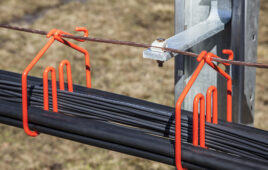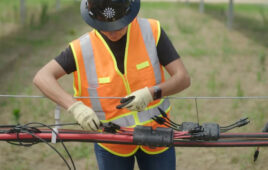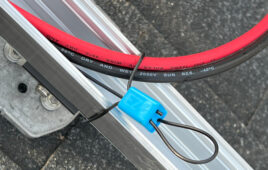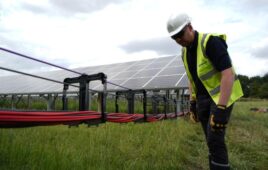This installation tip was provided by Sarah Parsons, Wiley Product Manager, BURNDY
One underappreciated conversation when discussing installations and PV system safety is wire management best practices. Poor and improper wire management products or techniques can damage PV wires and wire insulation, leading to ground-faults, system downtime, fires and high O&M costs early in the lifespan of a PV system. With no concrete industry standards for wire management, it is up to the owner and the installer to ensure proper practices are followed. For this reason, it is essential to have an understanding of quality wire management products and the best options for varying environments and conditions.

BURNDY
Wire damage can be the result of countless factors, but the most common is rodent damage and chafing from movement. The key to eliminating these situations is as simple as securing wires at regular intervals so they are tucked away from rodents and held away from abrasive surfaces. Properly supporting wires and observing minimum bending radii also mitigates excessive stress being applied to connection points, connectors and junction boxes. Although there is no direct reference to solar PV wiring, the NEC states that installations shall have a clean, clear aesthetic (NEC 110.12).
Finally, it is important to ensure installed solutions are listed and appropriate for harsh PV environments. Generic or unlisted wire products can drastically reduce the longevity of the installation. UV-rated nylon 12 and 304 stainless steel have proven track records in PV applications and are backed by testing data. Salt spray testing and UL 2703 temperature and humidity cycling form a good baseline for wire management options. Remember, all systems will require ongoing maintenance regardless of the material used, but the frequency and cost of this required maintenance is directly correlated to wire management solution quality.





Tell Us What You Think!